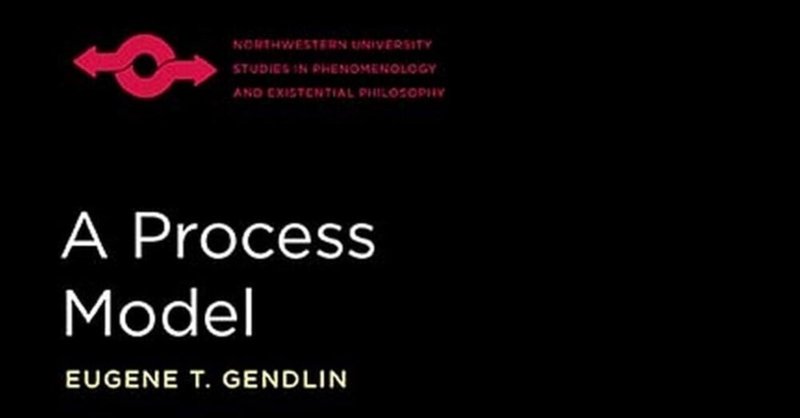
Collection of links: North American Philosophical Roots of “A Process Model” (Gendlin, 2018)
Three North American philosophers who preceded Gendlin
In “A Process Model (APM)” (Gendlin, 2018), various philosophers who preceded Gendlin are mentioned, either directly or indirectly. In ancient philosophy, Plato and Aristotle are mentioned, as well as Leibniz, who proposed the concept of “monads” in modern times and later, and Kant, although his reference is limited to “The Critique of Pure Reason.” Regarding influence, other names that might be mentioned are Bergson and Whitehead. However, as yet, little secondary literature on these philosophers discusses their relationships of influence thematically worldwide.
Thus, as a beginning to situate Gendlin’s philosophy historically, I have taken the philosophies of three philosophers active in the United States in the first half of the 20th century: John Dewey (1859-1952), George Herbert Mead (1863-1931), and Suzanne Langer (1895-1985). I have discussed their philosophies and introduced them as precursors to APM in my previous blog posts.
Dewey and Mead are important figures in the school of “classical pragmatism” in the history of philosophy. The two were colleagues at the University of Chicago and allies from then on. Dewey’s philosophy includes works that thematically discuss “the interaction of organisms with their environment.” Two of these are “Experience and Nature” (Dewey, 1925/1929) and “Logic: The Theory of Inquiry” (Dewey, 1938). I see these as strongly influencing Chapters I-IV of the APM. I have also drawn on his complementary works “The Quest for Certainty” (Dewey, 1929) and “Knowing and the Known” (Dewey & Bentley, 1949). Like Dewey, Mead was concerned with “the interaction of organisms with their environment. I also see his theory of time as influencing Chapter IV-B, “Time,” in APM, and his theory of symbols as influencing Chapter VII, “Culture, Symbol, and Language,” in APM. In my blog posts, I will mainly discuss Mead’s major work, “Mind, Self, and Society” (Mead, 1934). It should be noted that there are previous studies by the Swiss philosopher Donata Schoeller (Schoeller & Dunaetz, 2018; Saller & Schoeller, 2018) on the influence of Dewey and Mead on Gendlin.
Langer’s philosophy, on the other hand, is a continuation of “The Philosophy of Symbolic Forms” (Cassirer, 1923-9) of Ernst Cassirer (1874-1945), who emigrated from Germany to the United States. The aesthetics she developed is generally seen as a counterpoint to Dewey’s pragmatist aesthetics. However, her philosophy has strongly influenced APM and pragmatism, although Gendlin does not explicitly mention it. In particular, I see her philosophy as having a strong influence on “to respond a picture as a picture,” “aboutness,” and “discursive use versus art” of symbols discussed in Chapter VII of APM. In my blog posts, I focus on Langer’s major work, “Philosophy in a New Key” (Langer, 1942/1957).
Collection of links to my blog posts
Below, I will provide links to the chapters of APM that correspond to each of my previous blog posts.
“Chapter I: Body-Environment (B-En)” & “Chapter V-A: Intervening Events”
Pragmatistic origin of Gendlin’s en#0: with reference to Dewey and Mead
“Chapter II: Functional Cycle (Fucy)” & “Chapter I: Body-Environment (B-En)”
“Chapter IV-A: A Different Concept of the Body, Not a Machine”
Dewey’s “transaction” and Gendlin’s “interaction first”
“Chapter VI-B: The Development of Behavior Space” & “Chapter III: An Object”
A Preliminary Examination of the Concept of “Object”: From G. H. Mead to Gendlin in the 1980s
“Chapter VII-A: Symbolic Process”
Responding to a picture as a picture: Susanne Langer and Eugene Gendlin
“Chapter VII-B: Protolanguage”
Words and visual patterns: in light of Gendlin and Langer’s discussions
References
Cassirer, E. (1923-9). Philosophie der symbolischen Formen. Bruno Cassirer.
Dewey, J. (1929). Experience and nature (2nd ed.). Open Court.
Dewey, J. (1929). The quest for certainty. Minton, Balch.
Dewey, J. (1938). Logic: the theory of inquiry. Henry Holt.
Dewey, J. & Bentley, A.F. (1949). Knowing and the known. Beacon Press.
Gendlin, E. T. (2018). A process model. Northwestern University Press.
Kant (1787). Kritik der reinen Vernunft (2nd ed.). Johann Friedrich Hartknoch.
Langer, S.K. (1942/1957). Philosophy in a new key: a study in the symbolism of reason, rite, and art (3rd ed.). Harvard University Press.
Mead, G. H. (1934). Mind, self, and society: from the standpoint of a social behaviorist. (edited by C.W. Morris). University of Chicago Press.
Schoeller, D. & Dunaetz, N. (2018). Thinking emergence as interaffecting: approaching and contextualizing Eugene Gendlin’s Process Model. Continental Philosophy Review, 51, 123–140.
この記事が気に入ったらサポートをしてみませんか?
